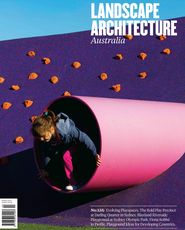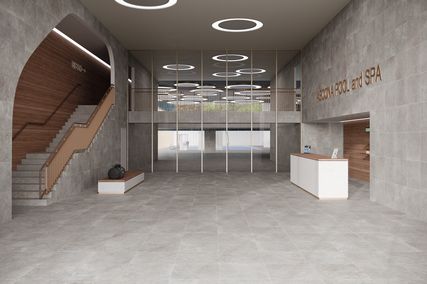
Kevin Taylor.
What qualities are important to you in the experience of spaces?
Kevin Taylor: First of all is human scale. That means a sense of the space having been crafted to some extent, the materiality of it, the detailing, so that there’s actually an extension of human scale, a sense of people being able to relate to the elements within the space having been designed, made and cared for by another human being. I think as an extension of those qualities, the spaces have to be sociable, in the sense that they promote human activity. Related to human activity is flexibility and open programming. And I think, in Australia, Federation Square is obviously the quintessential programmed space.
Obviously you need a sense of sustainability through all aspects of design and materiality; the sense of caring about the long-term use of resources. And lastly, I think it is important to allow people’s experience of a space to be multi-layered, to bring a sense of the site’s own story.
How does the way you work influence the outcomes?
KT: I think one of the things that has significantly influenced the practice over the years has been working with people from other disciplines. We have worked with artists, cultural planners, curators and writers, who all bring really interesting perspectives to our work. Every time we’ve done that we’ve had an unexpected outcome, one that we wouldn’t have imagined at the beginning.
What are some of the current influences on your work?
KT: Technology is changing the way people socialize. People don’t organize where they are going to meet a week beforehand any more. Groups of kids communicate via text messages and mobile phones and decide in a flash that they’re going to meet somewhere and half an hour later they’re meeting there.
The whole issue of globalization versus the local and the local sense of community is really important. And some of that is to do with flow of information and technology. The other thing is at a really fundamental level, and it’s to do with ownership of public spaces.
What is the future of landscape architecture?
KT: Well, I think urban design is where the future really is in design. You’ve only got to look at what’s happening around the world. People on every continent are streaming from the country to the city. If we’re going to manage the social, cultural and environmental impacts and opportunities of human beings on the planet, then we are going to have to learn how to design cities that meet all those needs. And we are going to have to learn how to retrofit existing cities. The concept of peak oil (not forgetting climate change) is a huge issue for almost every city in the world that’s been designed around the motor car. So, urban design is absolutely crucial when it comes to both the design of new cities and the redevelopment of existing cities to cope with the new population, to cope with all the environmental imperatives, and to give people not just an acceptable but a good quality of life. It’s a challenge to respond to that but it’s also a huge opportunity.
What’s your definition of urban design?
KT: Well, it’s very loose. I guess my definition of urban design is more about the process and the outcome. I’d say urban design is the design of cities in a collaborative manner that produces an integrated outcome. And the key words there for me are collaboration and integration. Urban design is not one discipline; urban designers are crucial to the process of designing cities but in the end they’re planning and design facilitators who bring a whole multitude of people together to make a city what it is.
What do we need to understand about Australia to practise here?
KT: In Australia we are progressively waking up to our not knowing that we don’t know. We are realizing that we do not know this place. This transition is like a grieving process, with elements of shock, denial, protest and despair but hopefully ultimately reorganization, with new values and meanings. This period has social, cultural, political and spiritual dimensions.
This is the context and challenge of landscape architecture in Australia in the coming decades. Globalization may be telling us that there is sameness and universality to our world, but the northern people found a profoundly different land in the south. What is exciting and critical is how we undertake this meeting. Different people and groups are concurrently at different points in the ignorance-to-knowing continuum.
What keeps you going in your work?
KT: I just really enjoy what I do. We’ve got a studio full of mostly young people and I really love working with them. It’s fantastic seeing people come up out of university who’ve got a passion for what they’re doing; it’s pretty infectious. We really bounce off each other in the studio. We’ve got a very open studio environment; I think that’s part of what keeps getting me out of bed every day and coming in to work with the great people working around us. But obviously I also enjoy designing. I think a lot of the public space design work we do is just really interesting, intriguing. Sometimes it’s too interesting, in a sense, as there are too many politics. Even though politics can be a pain in the butt, I find that a pretty interesting part of the project to engage with.
These observations were drawn from an interview with Kevin on urban design recorded by Place Focus in June 2011, as well as from his diaries.















